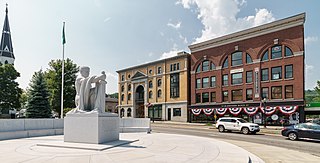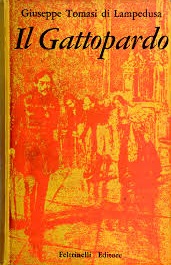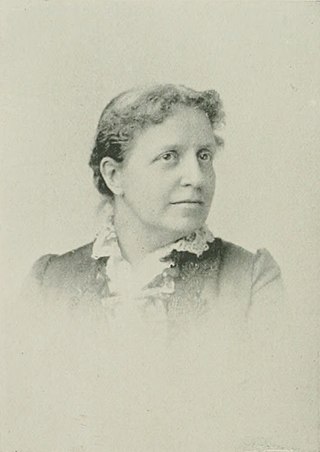
Giuseppe Tomasi, 11th Prince of Lampedusa, 12th Duke of Palma, GE, known as Giuseppe Tomasi di Lampedusa, was an Italian writer, nobleman, and Prince of Lampedusa. He is most famous for his only novel, Il Gattopardo, which is set in his native Sicily during the Risorgimento. A taciturn, solitary, shy, and somewhat misanthropic aristocrat, he opened up only with a few close friends, and spent a great deal of his time reading and meditating. He said of himself as a child, "I was a boy who liked solitude, who preferred the company of things to that of people", and in 1954 wrote, "Of my sixteen hours of daily wakefulness, at least ten are spent in solitude."

Barre is the most populous city in Washington County, Vermont, United States. As of the 2020 census, the municipal population was 8,491. Popularly referred to as "Barre City", it is almost completely surrounded by "Barre Town", which is a separate municipality.

The Leopard is a novel by Giuseppe Tomasi di Lampedusa that chronicles the changes in Sicilian life and society during the Risorgimento. Published posthumously in 1958 by Feltrinelli, after two rejections by the leading Italian publishing houses Mondadori and Einaudi, it became the top-selling novel in Italian history and is considered one of the most important novels in modern Italian literature. In 1959, it won Italy's highest award for fiction, the Strega Prize. In 2012, The Guardian named it as one of "the 10 best historical novels". The novel was made into an award-winning 1963 film of the same name, directed by Luchino Visconti and starring Burt Lancaster, Claudia Cardinale and Alain Delon.

Helen Stuart Campbell was an American author, economist, and editor, as well as a social and industrial reformer. She was a pioneer in the field of home economics. Her Household Economics (1897) was an early textbook in the field of domestic science.

Helen Frances Barolini was an American writer, editor, and translator. As a second-generation Italian American, Barolini often wrote on issues of Italian-American identity. Among her notable works are Umbertina (1979), a novel which tells the story of four generations of women in one Italian-American family; and an anthology, The Dream Book: An Anthology of Writings by Italian American Women (1985), which called attention to an emerging, and previously unnoticed, class of writers.
George Howes was a Montpelier, Vermont businessman and political figure who served as Vermont State Treasurer.

Dr. Rose Basile Green (1914-2003) was an American scholar, poet, and educator. Among her publications were a study of Italian-American writers, titled The Italian American Novel: A Document of the Interaction of Two Cultures (1974), and several volumes of poetry, specializing in the sonnet form. She was also a founder of Cabrini College in Radnor, Pennsylvania, and the first chair of its English department.

Mari Tomasi (1907–1965) was an American novelist who portrayed the lives of Italian immigrants in Vermont. Literature professor Thomas J. Ferraro calls her "the first significant Italian American woman novelist." Tomasi also worked as a journalist and local historian, and served a term in the Vermont House of Representatives.

Marion Benasutti was an American writer. The daughter of immigrants from Northern Italy, she was born in Brandy Camp, Pennsylvania, and grew up in Philadelphia. She learned English in school as a child, and never finished high school, yet enjoyed a successful writing career.

Diana Cavallo (1931-2017) was an American novelist, educator, playwright, and performer.
Octavia Cecilia Capuzzi Waldo Locke was an American writer and artist who was best known for her 1961 novel, A Cup of the Sun.
Julia Savarese is an American writer. She was born in New York City. After graduating summa cum laude from Hunter College in 1950, she worked as an editor for various publications. Her novels include The Weak and the Strong (1952), which tells the story of an Italian-American family living in New York during the Great Depression, and Final Proof (1971), a novel about the death of a publishing empire. She published several plays and received a Ford Foundation grant for playwriting. She also wrote for television, and in 1968 received the Hallmark Television Award.
Jean Feraca is an American poet, journalist, and radio host.

Tina DeRosa was an American writer best known for her 1980 novel, Paper Fish. She also published poetry, short stories, and creative nonfiction.

Umbertina (1979) is a feminist novel by Helen Barolini. It tells the story of four generations of women in one Italian-American family. It is the first novel by an Italian-American woman which explores, in depth, the connected themes of gender and ethnicity.
Edvige Giunta is a Sicilian-American writer, educator, and literary critic.
Carol Bonomo Albright is an American author, editor, and educator in Italian-American studies. She has published many books and articles on the subject and taught classes at the University of Rhode Island and the Harvard University Extension School. She was editor-in-chief of Italian Americana, a peer-reviewed cultural/historical journal, for over 25 years.

Andrew John Perchlik is an American activist and politician from Vermont. A Democrat, in 2018 he was elected to the Vermont Senate from the three-member at-large Washington County Senate District.
Anna Maria Cesarini Sforza was an Italian artist and mosaicist.












